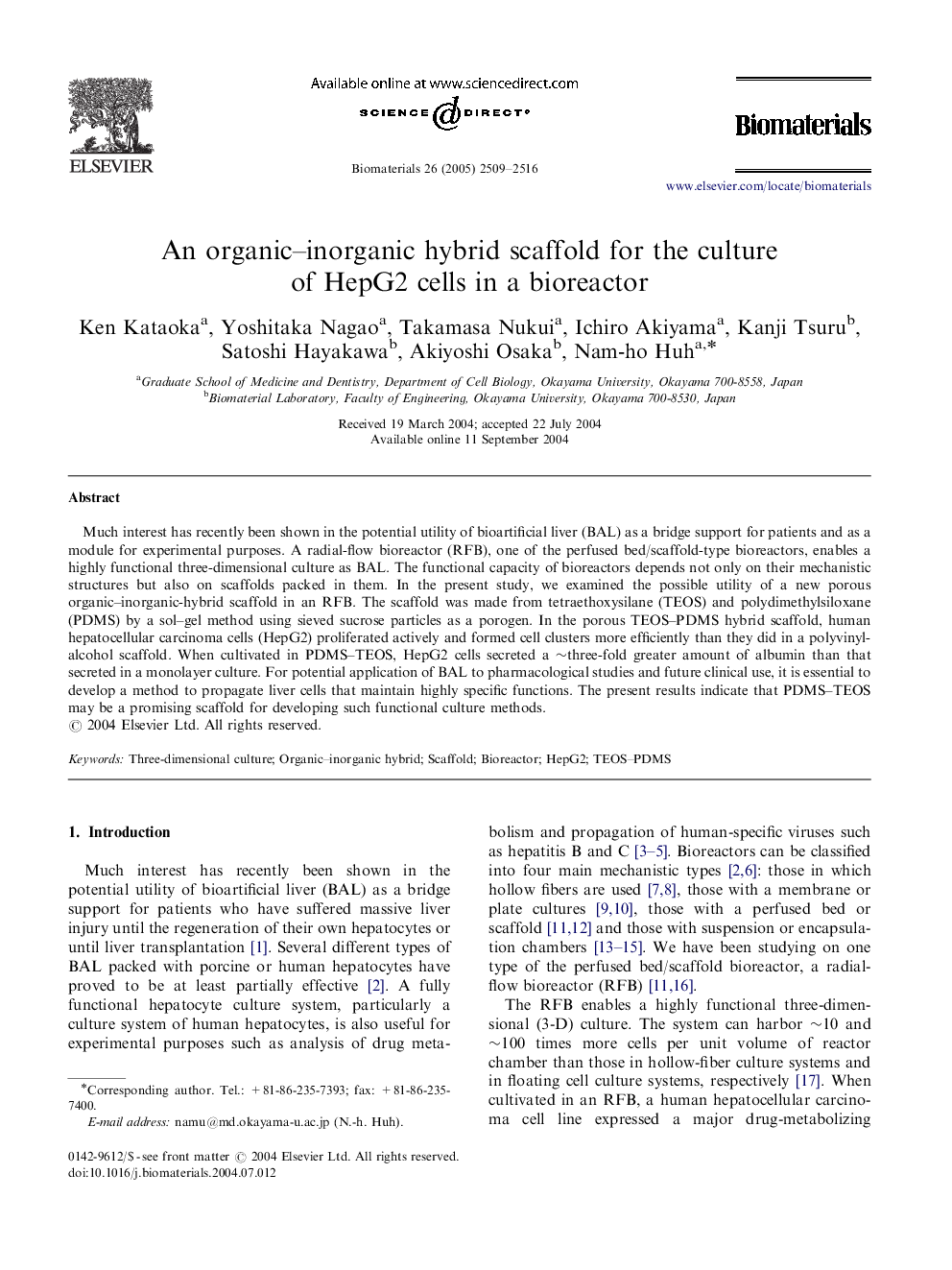| کد مقاله | کد نشریه | سال انتشار | مقاله انگلیسی | نسخه تمام متن |
|---|---|---|---|---|
| 12817 | 818 | 2005 | 8 صفحه PDF | دانلود رایگان |

Much interest has recently been shown in the potential utility of bioartificial liver (BAL) as a bridge support for patients and as a module for experimental purposes. A radial-flow bioreactor (RFB), one of the perfused bed/scaffold-type bioreactors, enables a highly functional three-dimensional culture as BAL. The functional capacity of bioreactors depends not only on their mechanistic structures but also on scaffolds packed in them. In the present study, we examined the possible utility of a new porous organic–inorganic-hybrid scaffold in an RFB. The scaffold was made from tetraethoxysilane (TEOS) and polydimethylsiloxane (PDMS) by a sol–gel method using sieved sucrose particles as a porogen. In the porous TEOS–PDMS hybrid scaffold, human hepatocellular carcinoma cells (HepG2) proliferated actively and formed cell clusters more efficiently than they did in a polyvinyl-alcohol scaffold. When cultivated in PDMS–TEOS, HepG2 cells secreted a ∼three-fold greater amount of albumin than that secreted in a monolayer culture. For potential application of BAL to pharmacological studies and future clinical use, it is essential to develop a method to propagate liver cells that maintain highly specific functions. The present results indicate that PDMS–TEOS may be a promising scaffold for developing such functional culture methods.
Journal: Biomaterials - Volume 26, Issue 15, May 2005, Pages 2509–2516